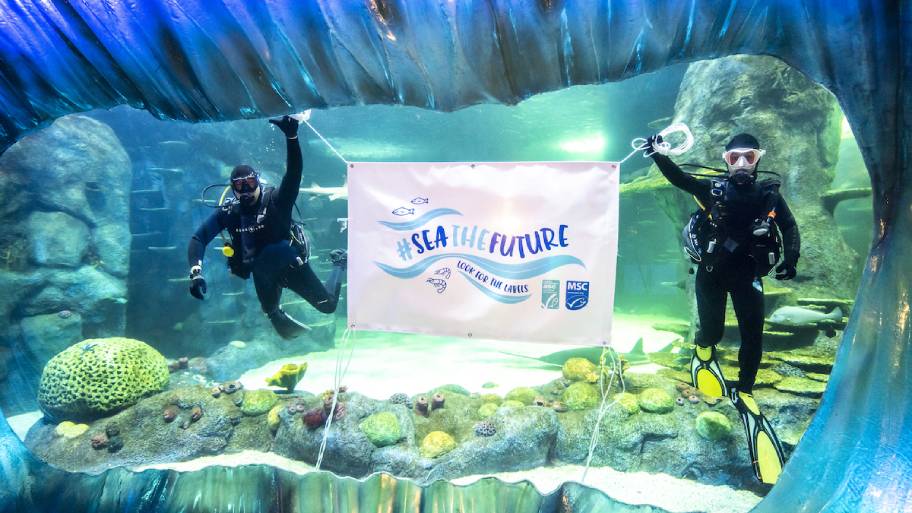
Ocean biodiversity at a tipping point, but innovation and sustainable fishing offer hope, with UN High Seas Treaty offering opportunity to scale up protection.
Scientists from every inhabited continent have issued a stark warning: ocean biodiversity is in decline, and urgent action is needed. But they have also expressed optimism, with Australian fisheries among those leading the way with sustainable fishing practices that are driving ocean recovery.
As World Ocean Day (8 June) approaches, the findings are part of a new global survey by the Marine Stewardship Council (MSC), analysed by GlobeScan, with views from 58 leading ocean scientists, eight from Australia including from the Biodiversity Council Australia, Centre for Marine Socioecology, Minderoo and OceanWatch Australia. It revealed more than two-thirds identified climate change as the greatest threat to ocean health, followed by overfishing and habitat loss. Although 21% were pessimistic about the future resilience of our ocean, and 34% unsure, nearly half (45%) remain optimistic, pointing to better science, policy, and management as the way forward.
Ahead of the United Nations Ocean Conference in France (9–13 June), the MSC is hoping the Australian government will ratify the High Seas Treaty, which seeks to protect biodiversity in areas beyond national jurisdiction. The treaty will play a vital role in achieving the global target to protect 30 percent of the world's coastal and marine areas by 2030, a key aim shared in the recently released documentary ‘Ocean’ with David Attenborough.
Australia signed the treaty in September 2023 but has yet to ratify it and enshrine it in law. So far, 21 countries have done so, short of the 60 needed for it to come into force.
Dr Beth Polidoro, Research Director at the MSC, said: “There is a consensus from scientists across the world that our oceans are under threat from human impact whether that is through overfishing or the ongoing threat of climate change. "
“What is positive, is that we are still in a place to change the trajectory, halt these negative impacts and ensure healthy oceans full of life for future generations.
“Fisheries already demonstrating this commitment must be supported, and governments need to provide an enabling environment so that positive progress can be accelerated globally.
Lowri Pryce, CEO at OceanWatch Australia, said: “The Australian picture is optimistic. With strong fisheries management controls and a community responsive seafood industry actively demonstrating its social and environmental credentials. Governments and communities must remember to encourage, reward and celebrate this trajectory domestically.”
Marine ecologist Professor Gretta Pecl, from The Biodiversity Council of Australia and the Institute for Marine and Antarctic Studies at UTAS, said: “Climate change is a magnifier of everything increasing pressure on biodiversity, fisheries, and ecosystems. There are big differences across regions, but Australians must realise that a healthy ocean underpins our food security, economy, and way of life.
“A huge 80% of the world’s biodiversity is in the ocean but seafood also forms an important part of our diet. One easy thing Australians can do to protect marine biodiversity is to look for the MSC blue fish tick label when shopping for seafood.”
The MSC’s new report, Preserving Ocean Life: How Sustainable Fishing Supports Biodiversity, showcases fisheries around the world that are reducing their environmental impact, from helping to preserve porpoises in the Celtic Sea to turtles in the Indian Ocean.
Peter Thomson, UN Special Envoy for the Ocean, writes in the report’s foreword: “These inspiring stories show that biodiversity protection and sustainable seafood production are two sides of the same coin.”
Australia offers compelling examples of this dual benefit in action. The Eastern Tuna and Billfish Fishery that spans the entire east coast has significantly reduced seabird bycatch using bird scaring lines and weighted hooks.
In the Northern Prawn Fishery, that spans Australia’s northern coastline, new research has shown a 56.6% reduction in large bycatch and a 3% boost in prawn catches, thanks to the use of a refined exclusion device. Sea snake captures dropped by 31.25%, ray captures by 76.6%, and early trials suggest up to 52% of juvenile sawfish may be stopped from entering the codend, the narrow, tapered end of a fishing net.
Leading globally, the Western Rock Lobster Fishery was the first in the world to become MSC certified. It has maintained this certification for over two decades by continually innovating, introducing Sea Lion Excluder Devices that have eliminated sea lion mortalities since 2012.
Thirty fisheries accounting for 35% of fish landings in Australia are certified to the MSC’s environmental standard for sustainable fishing. Recording 129 improvements to date, they are audited annually to ensure healthy fish populations, ecosystem integrity and strong management.
According to the MSC, marine biodiversity refers to the rich variety of life in our ocean. From the smallest plankton to the largest whales, it is essential for the health of the planet, providing food, livelihoods, oxygen, and climate regulation that humanity depends on.
